Occupational Safety Training for Pharmaceutical (Drugs) Manufacturing
99,000 ₫
Note: The price above is calculated per person. Prices may vary depending on the number of trainees participating in the course and market fluctuations. For more accurate pricing support, please refer to the quotation or contact our consultant directly.
Occupational safety is an important issue in pharmaceutical (drugs) manufacturing factories and needs to be addressed promptly to ensure the health and safety of workers, enhancing the reputation of businesses. The occupational safety training course is one of the effective solutions to raise awareness on how to prevent workplace accidents for workers involved in pharmaceutical (drugs) production.
Table of Contents
Toggle1. Overview of pharmaceuticals (drugs)
a. What are pharmaceuticals (drugs)?
- Pharmaceuticals, also known as drugs, are a type of product used to treat, prevent, or diagnose diseases. Drugs are produced from chemical compounds or natural ingredients, and can be sold as tablets, liquids, or other forms depending on the intended use. Drugs are usually manufactured in pharmaceutical factories and must comply with the quality regulations and standards of international health organizations.
- The pharmaceutical manufacturing industry in Vietnam is developing at a rapid pace. Currently, many large global pharmaceutical corporations have invested in and established drug manufacturing factories in Vietnam.
- In addition to international pharmaceutical corporations, Vietnam also has many large pharmaceutical enterprises. In 2020, Vietnam’s drug output reached nearly 13 billion units, an increase of 8.8% compared to the previous year.
- However, there are still many challenges for the pharmaceutical manufacturing industry in Vietnam, such as product quality and safety, insufficient production capacity to meet the needs of the domestic market, high investment and production costs, fierce competition with international and domestic pharmaceutical enterprises, as well as issues regarding regulations and product quality control.

b. Types of pharmaceutical (drug) manufacturing machines
The types of pharmaceutical (drug) manufacturing machines include:
- Tablet packing machine: This machine is used to pack tablets in different types of packaging.
- Tablet press machine: This machine is used to press tablets with different sizes and shapes.
- Filling machine: This machine is used to package drugs in liquid form.
- Powder mixer: This machine is used to mix powders and granules to produce drugs.
- Filter machine: This machine is used to filter small particles and other impurities during the drug manufacturing process.
- Bottle capping machine: This machine is used to package drugs in liquid form in bottles.
- Box packing machine: This machine is used to package drugs in boxes.
- Packaging machine: This machine is used to package drugs in complete packaging.
- Tablet polishing machine: This machine is used to polish tablets to make them look better.
- Drug analyzer: This machine is used to check the quality and purity of drugs.

c. Typical pharmaceutical (drug) manufacturing enterprises
Typical pharmaceutical manufacturing enterprises in Vietnam include:
- Nanogen Pharmaceutical Biotechnology Joint Stock Company is one of the leading companies in the field of biotechnology and pharmaceuticals in Vietnam. The company was established in 2001 and is headquartered in Vietnam.
- Biotechnology Branch – Nam Khoa Service and Trading Co., Ltd. is one of the leading units in Vietnam in the field of manufacturing and distributing biological products. This branch was established in 1996 and is headquartered in Ho Chi Minh City.
- Hau Giang Pharmaceutical Company: is a leading enterprise in the field of manufacturing and distributing pharmaceutical products in Vietnam, with outstanding products such as Paracetamol, Ampicillin, Sodium Benzoate, Ketoprofen, etc.
- IMEXPHARM Pharmaceutical Company: is one of the largest pharmaceutical enterprises in Vietnam with key products such as Bio-Silymarin, Imexphyto-C, Imexphar-C, and many other products.
- TRAPHACO Pharmaceutical Company: is the largest pharmaceutical enterprise in Northern Vietnam, with outstanding products such as Hoạt huyết dưỡng não, Cao xương khớp, and many other products.
- HA TAY Pharmaceutical Company: is one of the largest pharmaceutical enterprises in Vietnam, with key products such as Paracetamol, Gentamicin, and many other products.
- VIDIPHAR Pharmaceutical Company: is a leading pharmaceutical enterprise in Vietnam, with outstanding products such as Albendazole, Metronidazole, and many other products.
- OPC Pharmaceutical Company: is a high-quality pharmaceutical enterprise in Vietnam, with outstanding products such as Opcloxacin, OPC-HP, and many other products.
There are many international pharmaceutical (drug) manufacturing enterprises operating worldwide, including some large and famous enterprises such as:
- Pfizer (USA)
- Roche (Switzerland)
- Novartis (Switzerland)
- Sanofi (France)
- Merck & Co. (USA)
- GlaxoSmithKline (UK)
- AstraZeneca (UK)
- Johnson & Johnson (USA)
- Bayer (Germany)
- AbbVie (USA)
d. Specific jobs in a pharmaceutical (drug) manufacturing factory
Group 1
- Executive director, deputy executive director, head of department in a pharmaceutical (drug) manufacturing factory.
Group 2
- Safety officer: manages safety in the factory, designs safety procedures, supervises and urges employees to comply with safe working procedures.
Group 3
- Manufacturing: After the formula is developed, the drug manufacturing process begins. The manufacturing process can include many stages, from raw material processing to product packaging.
- Quality control: During the manufacturing process, samples are taken for quality control. These testing procedures include checking the purity, potency, and stability of the drug.
- Packaging and preservation: After manufacturing is completed, the drugs will be packaged and sealed. The packaging and sealing process must meet quality and safety standards to ensure that the drugs are preserved correctly.
- Consumption: After manufacturing is completed, the drugs are transported to pharmacies and medical facilities for distribution to patients for use. Consumption work includes warehouse management, ordering, and transporting products to the correct location and time.
Group 4
- Office work, service, sales, marketing.
- Manufacturing management, quality management, human resource management, material management, financial and accounting management.
- Research and development: This is the first job to produce a new drug, including researching the ingredients and uses of the drug, developing the formula, and testing for safety and effectiveness.

e. Common drug product forms on the market
Common drug products produced from pharmaceutical factories include:
- Antibiotics: are drugs used to kill or prevent the growth of bacteria in the human body.
- Pain relievers: are drugs that help relieve pain and reduce discomfort and aches in the body.
- Anti-inflammatory drugs: are drugs that help reduce inflammation and alleviate symptoms of pain and swelling in the body.
- Diabetes drugs: are drugs that help control blood sugar in people with diabetes.
- Cardiovascular drugs: are drugs used to treat cardiovascular problems such as high blood pressure, angina, heart failure, and stroke.
- Sedatives: are drugs that help reduce stress, anxiety, and promote better sleep.
- Cancer drugs: are drugs used to treat cancer by preventing or killing cancer cells.
- Physiological saline solution: also known as normal saline solution, is a type of solution used to create an environment similar to natural water and salt in the human body. It contains a similar ratio of salts and minerals to the environment in the body, helping to maintain electrolyte balance and providing essential factors to support cell function.
2. Overview of the work safety training course for pharmaceutical (drug) manufacturing
Within the scope of this article, we focus on issues related to group 3, because group 3 is the group directly participating in the manufacturing process, bearing the highest risk of work safety. See more about other groups here
a. What is group 3 work safety training?
- Work safety training for group 3 is a training session to equip workers with awareness of how to prevent work accidents.
- The work safety training course will help workers recognize and prevent dangers, and limit the risk of work accidents while working.
REGISTER FOR WORK SAFETY TRAINING SERVICES
b. Training duration
Initial safety training duration
- The total training duration is at least 24 hours, including the examination time.
- 8 hours of theoretical study on the system of policies and laws on work safety and hygiene
- 8 hours of theoretical study on basic knowledge of work safety and hygiene
- 4 hours of theoretical study on specialized training content
- 2 hours of practical study on specialized training content
- 2 hours of theoretical examination at the end of the training course
The safety training center will allocate the time into many training sessions depending on the time arrangement for employees. But usually, there will be 6 training sessions, and the course will last for 3 days, on the condition that the manufacturing enterprise can arrange continuous study time.
Periodic safety training duration
- Before the work safety card expires, if an employee wants to renew it, they must undergo a periodic work safety training course, with a periodic safety training duration of at least 50% of the initial safety training duration.
Explanation: The total periodic work safety training duration is at least 12 hours, including the examination time. After completing the periodic training course and passing the examination, the employee will be re-issued or have their work safety card renewed.
c. Content of the training course
| No. | TRAINING CONTENT | TRAINING DURATION (HOURS) | |||
| Total | In which | ||||
| Theory | Practice | Examination | |||
| I | System of policies and laws on work safety and hygiene | 8 | 8 | 0 | 0 |
| 1 | Overview of the system of legal documents on work safety and hygiene. | 6 | 6 | ||
| 2 | System of technical standards and regulations on work safety and hygiene. | 1 | 1 | ||
| 3 | Specific regulations of state management agencies on work safety and hygiene when newly building, expanding or renovating works, facilities for manufacturing, using, preserving, storing and inspecting types of machines, equipment, materials, and substances with strict requirements on work safety and hygiene. | 1 | 1 | ||
| II | Basic knowledge of work safety and hygiene | 8 | 8 | 0 | 0 |
| 1 | Basic knowledge of dangerous and harmful factors at the workplace. | 4 | 4 | ||
| 2 | Methods to improve working conditions. | 1 | 1 | ||
| 3 | Safety culture in manufacturing and business. | 1 | 1 | ||
| 4 | Rights and obligations of employers and employees; policies and regimes on work safety and hygiene for employees; functions and duties of the work safety and hygiene network. | 1 | 1 | ||
| 5 | Work safety and hygiene regulations, signs, work safety and hygiene instructions and use of safety equipment, personal protective equipment; skills and techniques for first aid for work accidents, and prevention of occupational diseases. | 1 | 1 | ||
| III | Specialized training content | 6 | 4 | 2 | 0 |
| General knowledge of types of machines, equipment, and substances that generate dangerous and harmful factors; analysis, assessment, and management of work safety and hygiene risks, safe working procedures with machines, equipment, and substances with strict requirements on work safety and hygiene. | 6 | 4 | 2 | ||
| IV | Work safety training examination at the end of the training course | 2 | 2 | 0 | 0 |
| Total | 24 | 22 | 2 | ||
See more training content of the 6 groups
d. Work safety card
After completing the work safety training course and passing the examination, the employee will be issued a work safety card (in practice, it is often called a group 3 work safety certificate ).
In which, the group 3 safety card will clearly show information such as: full name, date of birth, specific job and working environment. At the same time, it also has the training time, red stamp and signature confirming the completion of the training course.
According to the regulations on issuing safety cards specified in clause 2 article 24 of decree 44/2016/ND-CP, it is divided into 2 cases:
- Case where the employer and the employee have a labor contract with each other, the employer must sign, stamp and seal the safety card for the trained person in group 3 after undergoing the training course from the work safety training unit and passing the examination.
- In the case of freelance, seasonal employees, who do not have a labor contract, the training unit must sign, stamp and seal the safety card for the employee after undergoing the training course from the work safety training unit and passing the examination.

3. Identifying dangers when manufacturing pharmaceuticals (drugs)
Pharmaceutical (drug) manufacturing is a highly dangerous field with many risks that can affect human health and life. Some dangers when manufacturing pharmaceuticals (drugs) may include:
- Pharmaceuticals (drugs) can be contaminated with bacteria, viruses, fungi, microorganisms, heavy metals, toxic chemicals and banned substances used in production. This can cause negative effects on human health when used.
- During the manufacturing process, flammable chemicals, flammable gases, and flammable mixtures are used. If not used correctly or stored correctly, they can cause fires and explosions.
- Pharmaceutical (drug) manufacturing requires the use of many chemicals, many of which are toxic. These substances can be harmful to the health of manufacturing employees if not used correctly or if there are no protective measures.
- During the manufacturing process, dust can be generated from raw materials or auxiliary products. If not controlled correctly, this dust can cause health problems such as shortness of breath, pneumonia, and allergies.
- Pharmaceutical (drug) manufacturing requires the use of many hygienic equipment and environments. If not preserved and cleaned correctly, it can cause the growth and proliferation of microorganisms that are harmful to human health.
4. Common work accidents that occur when manufacturing pharmaceuticals (drugs)
Work accidents that can occur during the pharmaceutical (drug) manufacturing process include:
- Exposure to toxic chemicals: Workers in pharmaceutical factories can be exposed to toxic chemicals, causing health effects, such as liver or kidney toxicity or even cancer.
- Explosion or fire: The manufacturing of pharmaceuticals involves the use of flammable and explosive substances such as alcohol, acid, or toxic gases. Some chemicals can also generate sparks, melt, or react with other substances, causing the use of machines or equipment in the factory to lead to explosions or fires.
- Accidents with machinery: Employees in a pharmaceutical manufacturing factory can encounter accidents during the operation of machines, such as being crushed, cut, or hit by mechanical parts.
- Accidents with biological agents: Workers in a pharmaceutical manufacturing factory can be exposed to biological agents, such as bacteria, viruses, or fungi, causing infectious diseases or allergies.
- Other accidents: In addition, other accidents can occur such as falls, traffic accidents during the transportation of goods or valuable assets of the factory.
5. Safety measures when participating in pharmaceutical (drug) manufacturing
Pharmaceutical (drug) manufacturing is a special field, requiring strict work safety and product quality. Therefore, to ensure the safety of workers and product quality, the following safety measures need to be applied:
- Ensure that all employees are fully trained in work safety on work safety, manufacturing procedures, quality control procedures, and legal regulations related to pharmaceutical manufacturing.
- Employees are provided with and use full personal protective equipment such as masks, protective glasses, gloves, protective gowns, safety shoes, etc., to protect their health during the manufacturing process.
- Ensure that the raw materials used to manufacture drugs fully meet quality standards, are not contaminated with bacteria, are not polluted, and are stored and used correctly.
- Manufacturing processes are carried out correctly and fully, ensuring product consistency and quality control.
- All manufacturing equipment is inspected, maintained, and cleaned periodically to ensure performance and product quality.
- Assess risks during the manufacturing process and establish risk control measures to minimize the risk of incidents or work accidents.
- Use detergents, disinfectants, and insecticides correctly.
- Periodically organize work environment monitoring in factories and enterprises, collect and analyze harmful factors for employees, thereby adjusting to reduce the level of harm to prevent occupational diseases for them.

6. Benefits of work safety training for pharmaceutical (drug) manufacturing
An Toan Nam Viet provides your enterprise with the following great benefits after completing work safety training courses in accordance with the regulations in Decree 44/2016/ND-CP on work safety and hygiene, for companies, factories, and enterprises.
- Employees can recognize the potential risks of work accidents and take preventive measures to avoid them.
- Your Enterprise can establish risk prevention measures in the manufacturing, operation, and maintenance process.
- Minimize costs when work safety risks occur.
- Uninterrupted manufacturing will help increase labor productivity and product quality.
- Comply with work safety laws, avoiding legal risks.
- Create credibility and professionalism in all aspects, thereby enhancing your enterprise’s brand.
Nam Viet’s training courses are the solution to prevent and combat external factors affecting each individual so that they can avoid dangers that can lead to injury or, more seriously, death.
REGISTER FOR WORK SAFETY TRAINING SERVICES
7. Customer feedback after completing the work safety training course for pharmaceutical (drug) manufacturing
An Toan Nam Viet has many years of experience in the mission of accompanying many enterprises in Vietnam in general and in the southern provinces in particular. And that responsibility is something extremely precious to Nam Viet, which is why Nam Viet’s Work Safety Training is always focused on becoming more and more professional. And the motivation for An Toan Nam Viet to grow strong to this day comes from the positive feedback and suggestions from enterprises. Below are the feedback from our partners that we have served.
Bac Nam E&C Construction and Investment Joint Stock Company
“The first time I used the service at An Toan Nam Viet, I was very surprised by the enthusiastic 24/7 support of the consulting team. The class organization was very fast and convenient for our company, thank you very much for Nam Viet’s service!”
Hoa Dat Construction and Trading Joint Stock Company
“Nam Viet’s service has helped us a lot in simplifying work safety and the work of completing safety records to serve the working process. The consulting team is enthusiastic and timely with our questions. 5 stars for Nam Viet”
See more customer interviews after using An Toan Nam Viet’s services
8. An Toan Nam Viet’s Work Safety Training Capacity
An Toan Nam Viet is a reputable and quality work safety training center in Vietnam today. With work safety training sessions taking place continuously at manufacturing workshops, factories, or construction sites across the country (63 provinces and cities in Vietnam).
REGISTER FOR WORK SAFETY TRAINING SERVICES
Work safety training license
- An Toan Nam Viet has been checked and issued a certificate of eligibility for work safety and hygiene training by the Department of Work Safety of the Ministry of Labor – Invalids and Social Affairs. This further solidifies our work safety training capacity.

Documents and lectures
- Before work safety training documents are put into the Occupational Safety Training Courses, they have been reviewed and approved to ensure that the lectures are correct in terms of knowledge and effective when applied.
- The teaching method of the lecturers is synchronized according to An Toan Nam Viet’s teaching standards, which is a method that experts in work safety and hygiene training have researched and drawn from the teaching process to bring the highest knowledge acquisition efficiency for trainees.
Facilities
- Controlling the factors in the classroom that affect the training process will increase the teaching performance and the knowledge acquisition efficiency of trainees.
- The facilities supporting our training course always arrange spacious classrooms that meet standards for area, lighting, training equipment, etc.
9. Reputable and high-quality nationwide safety training center
At An Toan Nam Viet, we always place professional dedication to occupational safety training as a top priority. For us, imparting knowledge on how to protect oneself to workers so they have a safe foundation on their livelihood journey is a contribution to building the country.
To ensure the training is effective, we prepare carefully and meticulously for every small detail. From preparing teaching tools, equipment, and materials to textbooks, documents, audio, and lighting.
Our occupational safety instructors are experts with many years of experience in the field. They even have research works identifying hazards in all occupations and how to prevent them.
The instructors’ lectures are summarized from practice and conveyed in the most vivid and easy-to-visualize way to the employees. These factors help employees feel comfortable during the learning time and absorb our teaching knowledge well. Of course, the knowledge conveyed always closely follows Decree 44/2016/ND-CP.
From there, they grasp many measures to prevent dangers and how to protect themselves. At the same time, they can apply it in the most suitable way in their actual work.
Our safety training center is proud to be a reputable and professional provider of occupational safety training services with the following advantages:
- Competitive training costs, but the training quality is still guaranteed.
- Flexible training schedule based on the production situation of the company.
- Fast and legally compliant procedures for issuing occupational safety training certificates.
- The instructors are people with many years of experience in the profession.
- The classroom environment is controlled for factors affecting the training process to increase teaching performance and the knowledge absorption efficiency of trainees.
- The lectures are compiled to be suitable for occupational safety work at enterprises.
- An Toan Nam Viet works with dedication and professionalism to support customers accurately and quickly.

10. Refer to more occupational safety training materials for pharmaceutical (drugs) manufacturing
- Occupational safety material for pharmaceutical (drugs) manufacturing
- Occupational safety training materials
- Set of occupational safety training test questions
- Occupational safety multiple-choice test for pharmaceutical (drugs) manufacturing
- Slides of occupational safety training lecture for pharmaceutical (drugs) manufacturing
11. Occupational safety training activities for pharmaceutical (drugs) manufacturing
1 review for Occupational Safety Training for Pharmaceutical (Drugs) Manufacturing
No comments yet

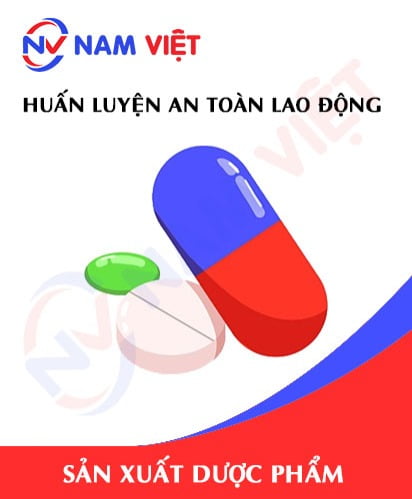
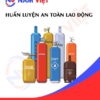
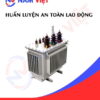



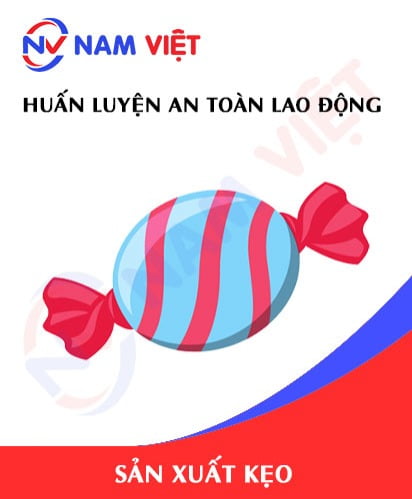
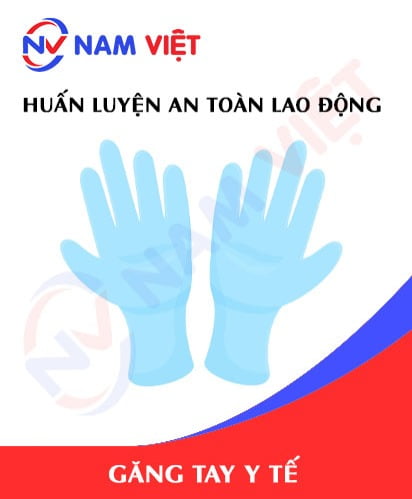




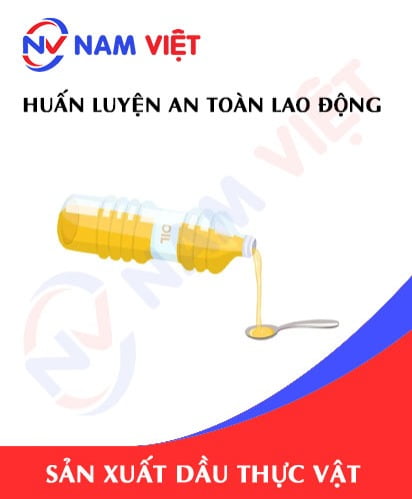

namchinh.haiphong341
Dịch vụ lắm nhé! tôi rất hài lòng với cách làm việc của trung tâm